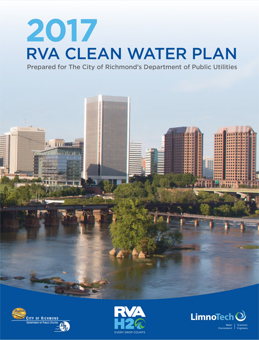Post by Omid Barr, Project Director at the UNC EFC
The last blog post on the benefits of using the EPA’s Integrated Planning Framework discussed opportunities for municipalities to incorporate climate change concerns into a holistic plan for wastewater and stormwater management. Another major concern for communities when it comes to stormwater management in particular is the impact on vulnerable populations already overburdened with pollution exposure. Untreated stormwater poses serious risks to human health. Lower income communities, particularly communities of color, will likely face worsening stormwater problems in the future. The consequences of poorly managed stormwater include sanitary backups in basements, flood exposures, disaster damage outcomes, and economic impacts.
Many existing stormwater policies do not take health equity and environmental justice into account and exclude communities most affected by stormwater mismanagement from the decision-making process. Municipalities can use the Integrated Planning method to allocate financial resources for wastewater and stormwater management in a way that supports public health. Both Richmond, Virginia and Spokane, Washington have used the integrated planning process to address environmental justice concerns.
Richmond, VA
Extreme rainfall events, induced by climate change, are becoming more common in Richmond, overwhelming the city’s drainage system and leading to increased incidents of street flooding. This flooding has disproportionate impacts on Richmond’s disadvantaged communities as the areas prone to high flood risk align well with areas originally redlined by New Deal–era maps, purportedly assessing risk for mortgage lending, a practice now widely viewed as racist. This legacy of racist policy ensures communities of color bear the brunt of stormwater flooding. These neighborhoods also lack critical infrastructure, tree canopy and green space, and modern stormwater infrastructure, increasing their vulnerability to climate change-induced flooding.
When Richmond’s Department of Public Utilities (DPU) began developing its RVA Clean Water Plan in 2014, the Integrated Planning framework was used not as a roadmap, but rather as a checklist. Stakeholder involvement was paramount and incorporated throughout the entire process. DPU invited representatives from local organizations that advocate for disadvantaged groups in the city as well as tenant, civic, and neighborhood associations, to provide input on the plan, share watershed concerns, and identify and weight goals.
An example of the success of integrated planning in Richmond is the expansion of green infrastructure in Shockoe Bottom. This low-lying neighborhood near downtown Richmond on the banks of the James River faces an extreme risk of flooding due to its built infrastructure. Homes and businesses in this area lie in a valley that drains roughly a third of the city. While a floodwall protects the neighborhood from floods from the river itself, storage and conveyance are needed to solve the combined sewer overflow (CSO) problems. Because of stakeholder engagement during the planning process, using green infrastructure to take flow out of the combined area is now a priority. DPU is planning to add green streets and parks in other historically black neighborhoods nearby Shockoe as well.
For future environmental justice stakeholder roundtables, DPU will pay community members to participate in project prioritization discussions. Paying community members to travel to these meetings is vital to ensure that residents who cannot afford to take off work will have their voices heard.
Spokane, WA

The Spokane River, which flows into Lake Spokane, is the ultimate receiving water body for the majority of CSOs and stormwater that are discharged within the City of Spokane as well as the discharge of treated effluent from the city’s wastewater treatment plant. For the Spokane Tribe of Indians, the river flows through the heart of their ancestral homeland. Members of the Tribe rely on the river for nourishment and medicinal and spiritual purposes. Toxins that enter the river bioaccumulate in fish, eventually presenting a public health issue when consumed by people. This problem is more concentrated in some of the low-income and minority populations in Spokane that rely on the river for food.
Before considering an integrated strategy, the city planned to spend $300 million to address overflows to the river from its combined sewers that occur during large storms. However, that investment would not have addressed other sources of pollution to the river, including stormwater. Reductions in notable pollutants that flow from the wastewater treatment plant and industrial entities, like PCBs and heavy metals would have been minimal.
The integrated planning process recommends Multi-objective Decision Analysis (MODA) as a tool for project prioritization. MODA offers a method of balancing the pros and cons of different alternatives to attain specific goals and has been increasingly used in the environmental field (Esmail & Geneletti, 2018). Spokane used MODA to incorporate environmental justice principles with respect to the implementation of stormwater management and CSO reduction projects. Based on the results of MODA, the city prioritized the West Broadway Spokane Urban Runoff Greenway Ecosystems (SURGE) project. Located in a low-income neighborhood, the SURGE project benefits the residents by providing education, low-impact development stormwater facilities, and enhancements of trees and plants in storm gardens.
Due to the locations of CSOs and stormwater outfalls, many recommended projects are sited near the shore of the Spokane River, potentially impacting locations of cultural and nutritional significance to the Tribe. However, the plan also explicitly requires the city to coordinate with the Tribe on the siting of projects throughout the planning process. In addition, the city’s comprehensive approach to addressing toxins in the Spokane River is of particular importance to the Tribe.
Additional Integrated Planning Resources
Adopting the Integrated Planning method can help local governments advance their water quality and environmental justice goals. Do you think integrated planning might be a good fit for your community? The EFC is offering free direct assistance to communities getting started with integrated planning. You can find out how to contact us about direct assistance and explore additional EFC integrated planning resources, including two recorded webinars on integrated planning topics, on our website.
Adem Esmail, B., & Geneletti, D. (2018). Multi‐Criteria decision analysis for nature conservation: A review of 20 years of applications. Methods in Ecology and Evolution, 9(1), 42–53. https://doi.org/10.1111/2041-210x.12899



One Response to “Using the Integrated Planning Framework for Advancing Environmental Justice”
Sara
As far as the changing climate is concerned, incorporating green infrastructure is a step in the right direction. Thanks for sharing such an amazing post!